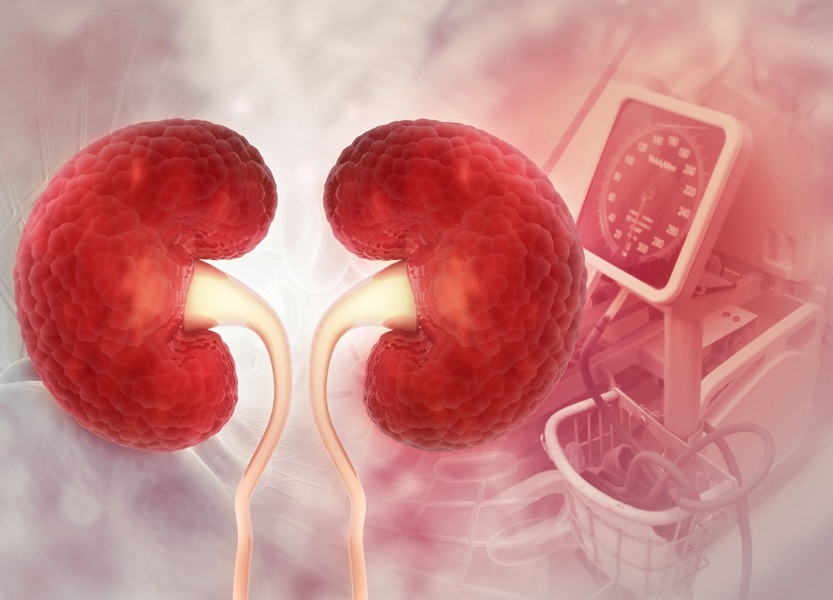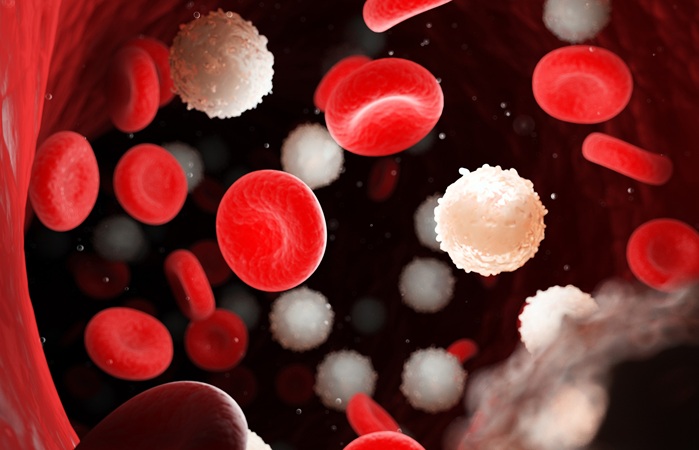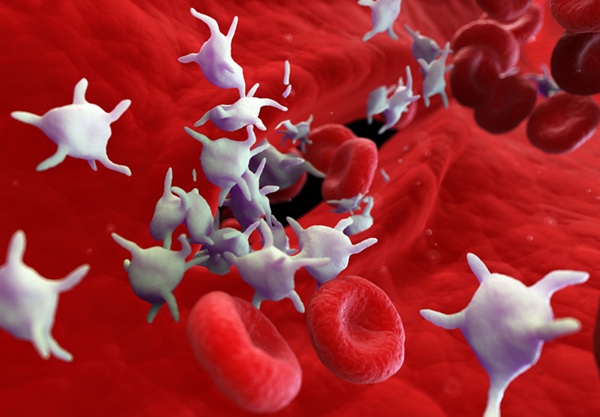Novel Molecular Signaling Pathway Inhibits Lung Cancer Growth and Metastasis
|
By LabMedica International staff writers Posted on 23 Nov 2015 |
A gene that had not been linked previously to lung cancer was found to be a critical component of a novel molecular signaling pathway that restricts lung cancer progression and metastasis.
Investigators at Northwestern University (Evanston, IL, USA) based the current study on emerging evidence that the neuronal guidance molecule SLIT played a role in tumor suppression, as SLIT-encoding genes were found to be inactivated in several types of cancer, including lung cancer. The SLIT gene produces the protein Slit, which in conjunction with the protein Robo (Roundabout) constitute a cell signaling pathway with many diverse functions including axon guidance and angiogenesis. Slit refers to a secreted protein which is most widely known as a repulsive axon guidance cue and Robo to its transmembrane protein receptor.
The investigators reported in the November 3, 2015, online edition of the Journal of Clinical Investigation that SLIT inhibited cancer cell migration by activating RhoA. RhoA (Ras homolog gene family, member A) is a small GTPase protein known to regulate the actin cytoskeleton in the formation of stress fibers. This protein is essential for the signaling function of the Rho GTPase complex.
The investigators found that myosin 9b (Myo9b) was a ROBO-interacting protein that suppressed RhoA activity in lung cancer cells. X-ray crystallography structural analyses revealed that the RhoGAP domain of Myo9b contained a unique patch that specifically recognized RhoA. The ROBO intracellular domain interacted with the Myo9b RhoGAP domain and inhibited its activity. Therefore, SLIT-dependent activation of RhoA was mediated by ROBO inhibition of Myo9b. In a mouse model, compared with control lung cancer cells, SLIT-expressing cells had a decreased capacity for tumor formation and lung metastasis.
In lung cancer cells, the intracellular domain (ICD) of ROBO directly interacted with the Myo9b RhoGAP domain and inhibited its activity. Thus, the negative regulation of Myo9b by SLIT/ROBO signaling in lung cancer cells activated RhoA and inhibited cell migration. Supporting this model, the data showed that SLIT inhibited lung tumor invasion and metastasis in a xenograft mouse model. Furthermore, Myo9b was highly expressed in human lung cancer tissues as compared with levels observed in the control samples. Consistently, increased Myo9b expression was associated with lymph node metastasis, advanced tumor stage, and poor patient survival.
These results implicate the existence of a previously unknown SLIT/ROBO/Myo9b/RhoA signaling pathway that inhibits cell migration and suppresses lung cancer metastasis.
“Elevated Myo9b expression is associated with fast lung cancer progression and poor prognosis,” said senior author Dr. Jane Wu, professor of neurology and psychiatry at Northwestern University. “These observations suggest the exciting possibility of developing Myo9b as a new biomarker for cancer, especially lung cancer. Our study provides new insights into the molecular and cellular mechanisms underlying lung cancer invasion and metastasis, a critical process that often leads to fatal consequence. Our data also provide a solid foundation for developing new diagnostic and therapeutic tools for lung cancer.”
Related Links:
Northwestern University
Investigators at Northwestern University (Evanston, IL, USA) based the current study on emerging evidence that the neuronal guidance molecule SLIT played a role in tumor suppression, as SLIT-encoding genes were found to be inactivated in several types of cancer, including lung cancer. The SLIT gene produces the protein Slit, which in conjunction with the protein Robo (Roundabout) constitute a cell signaling pathway with many diverse functions including axon guidance and angiogenesis. Slit refers to a secreted protein which is most widely known as a repulsive axon guidance cue and Robo to its transmembrane protein receptor.
The investigators reported in the November 3, 2015, online edition of the Journal of Clinical Investigation that SLIT inhibited cancer cell migration by activating RhoA. RhoA (Ras homolog gene family, member A) is a small GTPase protein known to regulate the actin cytoskeleton in the formation of stress fibers. This protein is essential for the signaling function of the Rho GTPase complex.
The investigators found that myosin 9b (Myo9b) was a ROBO-interacting protein that suppressed RhoA activity in lung cancer cells. X-ray crystallography structural analyses revealed that the RhoGAP domain of Myo9b contained a unique patch that specifically recognized RhoA. The ROBO intracellular domain interacted with the Myo9b RhoGAP domain and inhibited its activity. Therefore, SLIT-dependent activation of RhoA was mediated by ROBO inhibition of Myo9b. In a mouse model, compared with control lung cancer cells, SLIT-expressing cells had a decreased capacity for tumor formation and lung metastasis.
In lung cancer cells, the intracellular domain (ICD) of ROBO directly interacted with the Myo9b RhoGAP domain and inhibited its activity. Thus, the negative regulation of Myo9b by SLIT/ROBO signaling in lung cancer cells activated RhoA and inhibited cell migration. Supporting this model, the data showed that SLIT inhibited lung tumor invasion and metastasis in a xenograft mouse model. Furthermore, Myo9b was highly expressed in human lung cancer tissues as compared with levels observed in the control samples. Consistently, increased Myo9b expression was associated with lymph node metastasis, advanced tumor stage, and poor patient survival.
These results implicate the existence of a previously unknown SLIT/ROBO/Myo9b/RhoA signaling pathway that inhibits cell migration and suppresses lung cancer metastasis.
“Elevated Myo9b expression is associated with fast lung cancer progression and poor prognosis,” said senior author Dr. Jane Wu, professor of neurology and psychiatry at Northwestern University. “These observations suggest the exciting possibility of developing Myo9b as a new biomarker for cancer, especially lung cancer. Our study provides new insights into the molecular and cellular mechanisms underlying lung cancer invasion and metastasis, a critical process that often leads to fatal consequence. Our data also provide a solid foundation for developing new diagnostic and therapeutic tools for lung cancer.”
Related Links:
Northwestern University
Latest BioResearch News
- Genome Analysis Predicts Likelihood of Neurodisability in Oxygen-Deprived Newborns
- Gene Panel Predicts Disease Progession for Patients with B-cell Lymphoma
- New Method Simplifies Preparation of Tumor Genomic DNA Libraries
- New Tool Developed for Diagnosis of Chronic HBV Infection
- Panel of Genetic Loci Accurately Predicts Risk of Developing Gout
- Disrupted TGFB Signaling Linked to Increased Cancer-Related Bacteria
- Gene Fusion Protein Proposed as Prostate Cancer Biomarker
- NIV Test to Diagnose and Monitor Vascular Complications in Diabetes
- Semen Exosome MicroRNA Proves Biomarker for Prostate Cancer
- Genetic Loci Link Plasma Lipid Levels to CVD Risk
- Newly Identified Gene Network Aids in Early Diagnosis of Autism Spectrum Disorder
- Link Confirmed between Living in Poverty and Developing Diseases
- Genomic Study Identifies Kidney Disease Loci in Type I Diabetes Patients
- Liquid Biopsy More Effective for Analyzing Tumor Drug Resistance Mutations
- New Liquid Biopsy Assay Reveals Host-Pathogen Interactions
- Method Developed for Enriching Trophoblast Population in Samples
Channels
Clinical Chemistry
view channel
Paper-Based Device Boosts HIV Test Accuracy from Dried Blood Samples
In regions where access to clinics for routine blood tests presents financial and logistical obstacles, HIV patients are increasingly able to collect and send a drop of blood using paper-based devices... Read more
AI-Powered Raman Spectroscopy Method Enables Rapid Drug Detection in Blood
Accurately monitoring drug levels in the blood is essential for effective treatment, particularly in the management of cardiovascular diseases. Traditional techniques for monitoring blood drug levels often... Read more
Novel LC-MS/MS Assay Detects Low Creatinine in Sweat and Saliva
Timely and accurate monitoring of renal function is essential for managing patients at risk of acute kidney injury (AKI), which affects about 12% of hospitalized patients and up to 57% of ICU patients.... Read more
Biosensing Technology Breakthrough Paves Way for New Methods of Early Disease Detection
Nanopores are tiny openings that can detect individual molecules as they pass through, making them ideal for analyzing biomolecules like DNA and proteins. However, detecting proteins at extremely low ... Read moreMolecular Diagnostics
view channel
CSF Test Distinguishes Prion Disease from Other Causes of Rapidly Progressive Dementia
Rapidly progressive dementias are a category of dementia where patients experience a swift decline from the onset of symptoms to losing functional independence, typically within two years.... Read more
Newly Identified Stroke Biomarkers Pave Way for Blood Tests to Quickly Diagnose Brain Injuries
Each year, nearly 800,000 individuals in the U.S. experience a stroke, which occurs when blood flow to specific areas of the brain is insufficient, causing brain cells to die due to a lack of oxygen.... Read more
CRISPR-Based Test Diagnoses Life-Threatening Fungal Infection More Quickly
Pneumocystis jirovecii pneumonia (PJP) is a serious fungal infection that mainly affects children and those with weakened immune systems. Diagnosing PJP typically requires invasive procedures like bronchoalveolar... Read more
First Of Its Kind Measles Antibody Test Validated for Use with Dried Blood Spot Samples
Measles is a highly contagious airborne disease that can lead to serious complications for those infected. With the number of measles cases increasing worldwide, expanding and improving access to testing... Read moreHematology
view channel
Non-Invasive Prenatal Test for Fetal RhD Status Demonstrates 100% Accuracy
In the United States, approximately 15% of pregnant individuals are RhD-negative. However, in about 40% of these cases, the fetus is also RhD-negative, making the administration of RhoGAM unnecessary.... Read more
WBC Count Could Predict Severity of COVID-19 Symptoms
The global health crisis caused by the SARS-CoV-2 virus continues to impact millions of people worldwide, with many experiencing persistent symptoms months after the initial diagnosis. Cognitive impairment... Read more
New Platelet Counting Technology to Help Labs Prevent Diagnosis Errors
Accurate platelet count testing is a significant challenge for laboratories. Inaccurate results can lead to misdiagnosis, missed diagnoses, and delayed treatment for a variety of potentially fatal conditions,... Read more
Streamlined Approach to Testing for Heparin-Induced Thrombocytopenia Improves Diagnostic Accuracy
Heparin-induced thrombocytopenia (HIT), a serious side effect of the blood thinner heparin, is difficult to diagnose because thrombocytopenia, or low platelet count, can be caused by a variety of factors... Read moreImmunology
view channel
New Test Measures Preterm Infant Immunity Using Only Two Drops of Blood
Preterm infants are particularly vulnerable due to their organs still undergoing development, which can lead to difficulties in breathing, eating, and regulating body temperature. This is especially true... Read more
Simple Blood Test Could Help Choose Better Treatments for Patients with Recurrent Endometrial Cancer
Endometrial cancer, which develops in the lining of the uterus, is the most prevalent gynecologic cancer in the United States, affecting over 66,000 women annually. Projections indicate that in 2025, around... Read more
Novel Analytical Method Tracks Progression of Autoimmune Diseases
Patients with autoimmune diseases often have lifelong contact with doctors and hospitals. The typical patient diagnosed is a woman in her fifties and the disease requires lifelong treatment.... Read more3D Bioprinted Gastric Cancer Model Uses Patient-Derived Tissue Fragments to Predict Drug Response
Tumor heterogeneity presents a major obstacle in the development and treatment of cancer therapies, as patients' responses to the same drug can differ, and the timing of treatment significantly influences prognosis. Consequently, technologies that predict the effectiveness of anticancer treatments are essential in minimizing... Read moreMicrobiology
view channel
Gastrointestinal Panel Delivers Rapid Detection of Five Common Bacterial Pathogens for Outpatient Use
Acute infectious gastroenteritis results in approximately 179 million cases each year in the United States, leading to a significant number of outpatient visits and hospitalizations. To address this, a... Read more
Rapid PCR Testing in ICU Improves Antibiotic Stewardship
A collaborative study led by the University of Plymouth (Devon, UK) has shown that rapid polymerase chain reaction (PCR) testing in the intensive care unit (ICU) improved antibiotic stewardship compared... Read morePathology
view channel
Informatics Solution Elevates Laboratory Efficiency and Patient Care
QuidelOrtho Corporation (San Diego, CA, USA) has introduced the QuidelOrtho Results Manager System, a cutting-edge informatics solution designed to meet the increasing demands of modern laboratories.... Read more
Microfluidic Device Assesses Stickiness of Tumor Cells to Predict Cancer Spread
Ductal carcinoma in situ (DCIS), a type of early-stage breast cancer, is often referred to as stage zero breast cancer. In many cases, it remains harmless and does not spread beyond the milk ducts where... Read more
New AI Tool Outperforms Previous Methods for Identifying Colorectal Cancer from Tissue Sample Analysis
Tissue analysis typically involves a pathologist reviewing scanned digital slides from a patient’s intestinal sample and marking specific areas, such as those where cancerous and related tissues are present.... Read moreTechnology
view channel
POC Paper-Based Sensor Platform to Transform Cardiac Diagnostics
Cardiovascular diseases continue to be the leading cause of death worldwide, accounting for over 19 million fatalities annually. Early detection of myocardial infarction (MI), commonly known as a heart... Read moreStudy Explores Impact of POC Testing on Future of Diagnostics
In today’s rapidly changing world, having quick and accurate access to medical information is more crucial than ever. Point-of-Care Diagnostics (PoC-D) and Point-of-Care Testing (PoC-T) are making this... Read more
Low-Cost, Fast Response Sensor Enables Early and Accurate Detection of Lung Cancer
Cancer biomarkers are valuable tools for early diagnosis as their concentration in body fluids, such as serum, can be measured to detect the disease at an earlier stage. Additionally, serum levels of these... Read moreIndustry
view channel
CACLP 2025 Unites Global Innovators in IVD Industry
CACLP (Shanghai, China) will be holding the 22nd China International In Vitro Diagnostic Expo, the largest and most influential gathering of the IVD industry in China, 22-24 March 2025 at the Hangzhou... Read more
Bio-Rad to Acquire Digital PCR Developer Stilla Technologies
Bio-Rad Laboratories (Hercules, CA, USA) has entered into a binding offer to purchase all equity interests in Stilla Technologies (Villejuif, France). The acquisition remains subject to consultation with... Read more

















